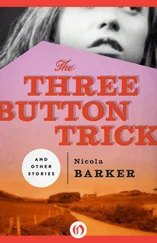2) Around two years earlier
Mathur’s wife, the Rani’s daughter Jagadamba, is struck down with a severe case of dysentery. After several weeks of intensive treatment her doctors declare that there is nothing more they can do for her. Utterly desperate, Mathur comes to see Sri Ramakrishna and asks him if he can help. Of course, Sri Ramakrishna will never countenance the idea of using his so-called “occult powers” unless the Mother wills it. But the case of Jagadamba is slightly different, as Mathur cogently explains.… His vast inheritance, it transpires, is entirely dependent on the survival of his wife (who is the actual heir to the Rani’s immense estate). If Jagadamba dies, Mathur makes clear, not only will he — Mathur — lose all his money, but he will also lose his controlling interest in the Kali Temple.
Ah, what is a poor guru to do under such circumstances? Suddenly (quite miraculously) the saint’s tender heart is filled with compassion. “Don’t worry,” he assures Mathur, “your wife will be cured.”
By the time Mathur Nath Biswas reaches home that night, Jagadamba is already commencing her miraculous recovery.
And the Master? The very moment Jagadamba’s health starts to improve, Sri Ramakrishna is struck down with a chronic case of dysentery himself. It torments him for six months. He suffers quite dreadfully.
The Mother does have a rather dark sense of humor.
3) 1865, or thereabouts
During Sri Ramakrishna’s practice of madhura bhava (or the sweet/conjugal mood) Mathur holds a spectacular five-day festival at his magnificent home in Janbazar for the Durga Puja . Such is Mathur’s enjoyment of this festival that, as it draws to its natural climax — as the magnificent image of Durga is to be taken and immersed in the Ganga — Mathur becomes overwhelmed by a spirit of childish petulance and suddenly refuses — point-blank — to say the final prayer.
He has a monumental public meltdown and (certainly not for the first time in his life) behaves like a toddler who has devoured rather more red sweets than is entirely good for him. He is completely overstimulated. He will not stand for the festival to be done with and for the prevailing mood of celebration and communion and extravagance and blissfulness to be brought to an end. He becomes utterly hysterical and threatens bloodshed — or worse — if anyone tries to take the image away from him. He begins to guard it, ferociously. Mathur’s wife, Jagadamba, and several other people try their best to talk some sense into him, but Mathur refuses to be altered from his course. This festival will go on forever (d’you hear?), or he will not be held responsible for the consequences!
Eventually Jagadamba — in total desperation — calls on Sri Ramakrishna.
Sri Ramakrishna goes to see Mathur and asks him why he will not let the priest immerse the image. Mathur says that he loves the Mother too much and that he cannot bear to be separated from her, so the worship must simply continue on indefinitely. Like an overwrought and (let’s face it) overindulged teenage girl, Mathur — at this precise moment in time — simply cannot live without the Mother.
Sri Ramakrishna listens attentively to Mathur and then smiles (who better than he to understand such spiritual and emotional excesses?).
“What does it matter if the image is taken to the river?” he murmurs, lightly rubbing Mathur’s chest as he speaks. “Surely this”—his hand rests over Mathur’s frantically beating heart—“is where the Mother truly dwells?”
Mathur is immediately calmed by the guru ’s touch and promptly allows (much to everyone’s abundant relief) the image to be taken away and immersed.
4) 14th of July 1871
On this day, at 5:00 p.m., Mathur Nath Biswas, Sri Ramakrishna’s most loving and generous benefactor (aside from the Divine Mother herself, of course) breathes his last following a vicious attack of typhoid fever. During his brief illness, Mathur’s beloved guru , Sri Ramakrishna, never pays him a visit (perhaps because typhoid is contagious). The guru sends Hriday, his nephew, to Mathur’s home each day (or perhaps Hriday goes of his own volition) for regular updates on Mathur’s progress. The day that Mathur dies, Sri Ramakrishna enters a long period of samadhi in the late afternoon. When he emerges from it he tells his nephew that Mathur has passed away at five o’clock. This fact is duly confirmed a short while later. When people — years after — ask the guru if Mathur (in exchange for his extraordinary fifteen years of service to the avatar ) escaped the dreaded burden of rebirth, the guru merely mutters that when he died Mathur “still had a taste for enjoyment.”
Earthly attachments, it seems, are a serious long-term stumbling block to eternal bliss (no matter how great and generous and heartfelt your service).
Uh …
So that’s a resounding “no,” in other words.
5) 1869, or thereabouts
Mathur develops a giant abscess (its location is undisclosed — but creative license dictates that we imagine it pulsating, ominously, on the cheek of one buttock) and is forced to stay in bed for many weeks. During this time he constantly begs for Sri Ramakrishna to pay him a visit, but the hard-hearted guru simply ignores his requests. Messenger after messenger is haughtily informed by the guru that he has no power to cure the abscess, so there is simply no point in him visiting Mathur. The plaintive requests continue to roll in until eventually (probably under pressure from Hriday) a grumpy Sri Ramakrishna goes to visit his richest and most generous devotee. Mathur, in evident agony, delighted to see the Master, reaches out a hand from his sickbed and whispers, “You have come! Please, will you give me a little of the dust off your feet?”
Sri Ramakrishna gazes down at him suspiciously. “Why?” he snarks. “Will it cure your abscess?”
Mathur is mortified. “I have a doctor to cure my abscess, Father,” he insists. “I want the dust off your feet simply to guide me through the ocean of maya .”
At this, the reluctant guru enters a state of ecstasy and Mathur is finally able to place his head onto the guru ’s feet and receive his blessing.
He recovers shortly after.
Sri Ramakrishna has many visions of God in many different forms, but ultimately …
“If given the choice,
I love to see God’s lila
As a human being.”
1867, at Kamarpukur
There have been so many dreadful arguments over recent days that poor Uncle has become quite exhausted with it all. This tense atmosphere is not good for Uncle. He has returned to his home village to recuperate after an especially exhausting phase of his sadhana combined with the aftereffects of the severe case of dysentery which Uncle says he took upon himself voluntarily in exchange for the life of Mathur Baba’s wife, Jagadamba.
Some of the tension has been between Uncle’s wife, Sarada, and the Brahmini . Uncle’s wife — still a young girl, but with a most obliging and modest nature — has come from her father’s village to visit us and Uncle is delighting in teaching her many valuable spiritual and domestic lessons. Uncle is, of course, most particular about how a home should be run, and how a person should deal with neighbors, and what is the best kind of cloth or bowl. I know, to my cost, that Uncle is just as fastidious concerning his domestic affairs as he is with regard to his spiritual life. And Sarada is very happy to learn from her husband. She is a most serious and receptive pupil.
But the Brahmini seems to feel that Uncle is wasting his time with such piddling preoccupations, that Uncle should be turning his mind to higher issues.
Читать дальше












